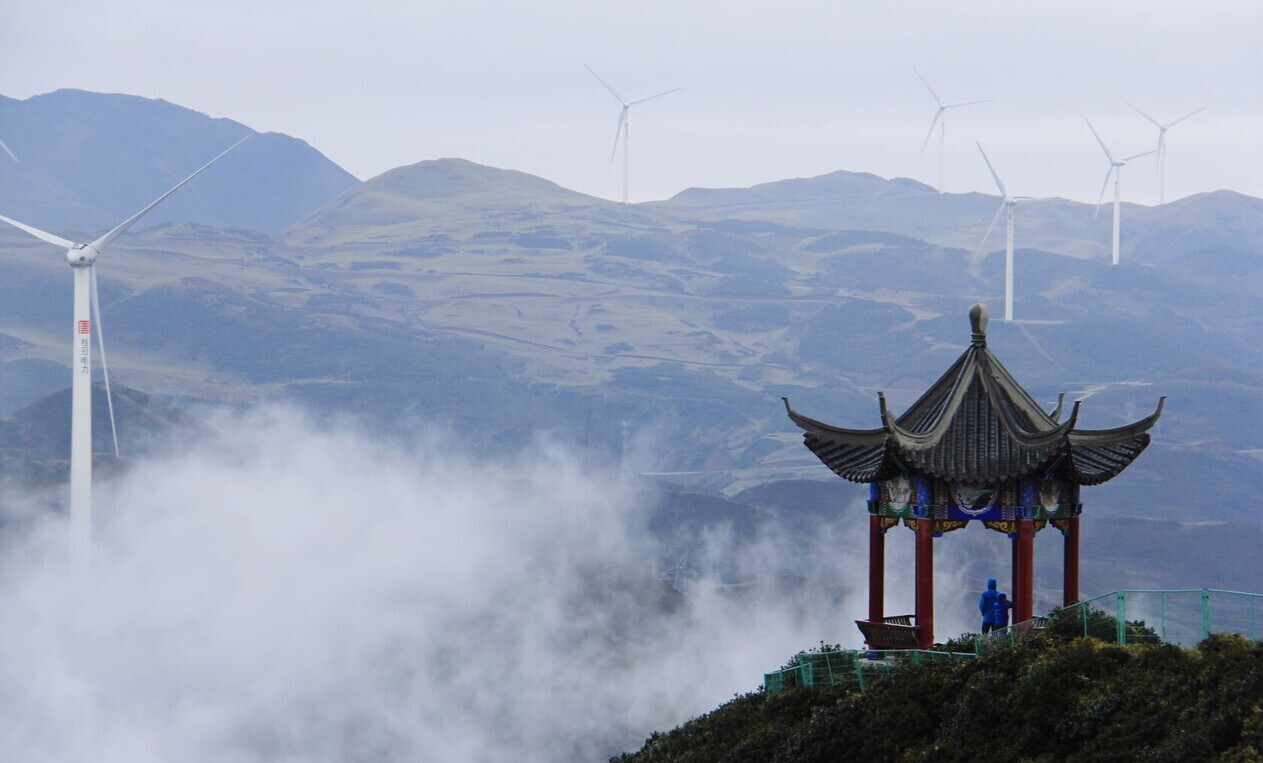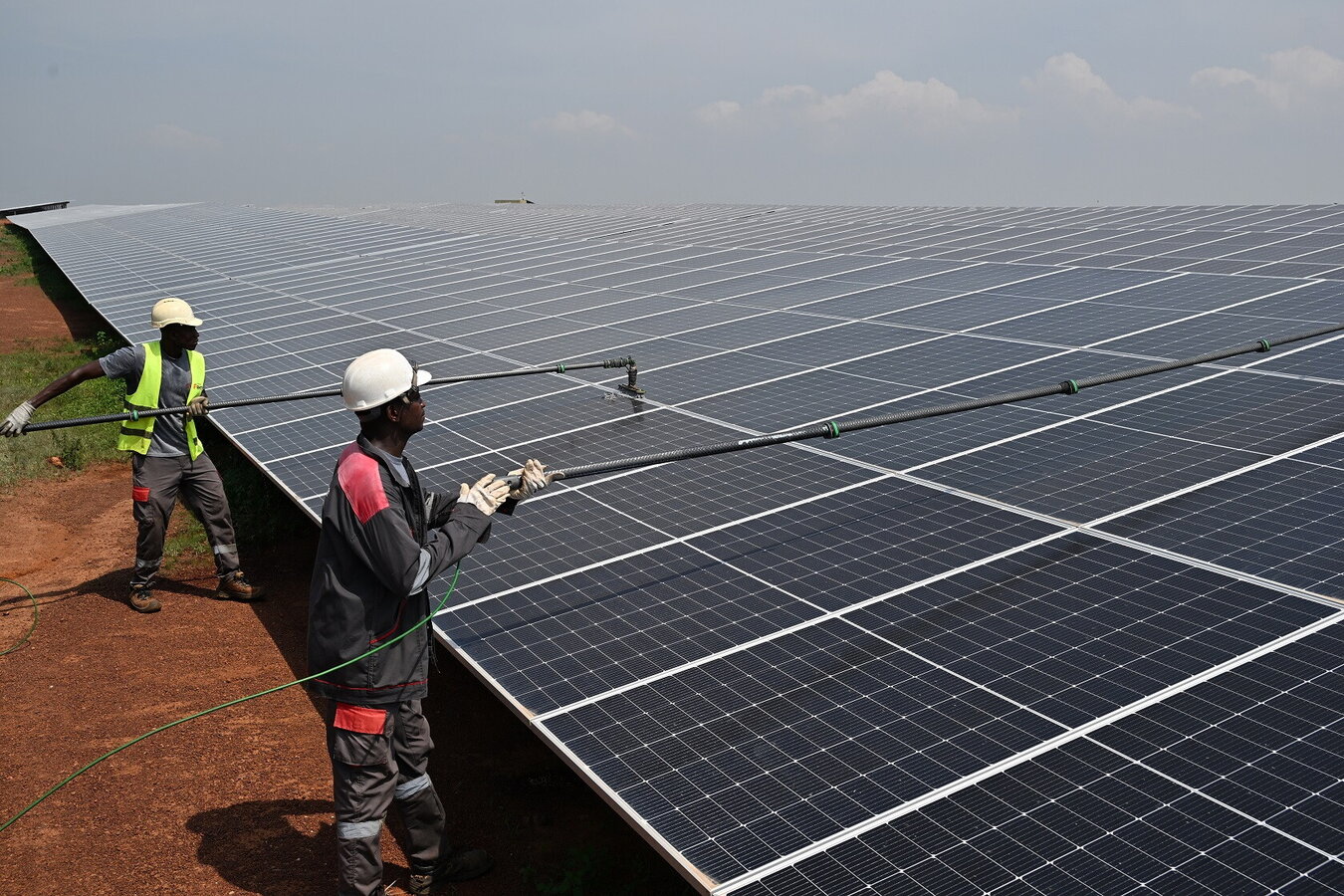
New energy communities
The belt and road initiative and Eurasian connectivity
Through massive investments in energy infrastructure, China is reshaping the Eurasian geoeconomy and fostering a new energy community under its influence
9 minS
ince China launched the Belt and Road Initiative in 2013, energy cooperation has been one of its core components. Through investments in natural gas pipelines, power grid upgrades, and renewable energy projects, China has not only reshaped the energy interconnection patterns across the Eurasian continent but also significantly influenced the region’s geopolitical dynamics.
Since President Trump took office, the U.S.-China trade war has escalated, weakening the momentum of global economic recovery. The crisis in Ukraine remains unresolved, and the conflict between Israel and Palestine has reignited. Geopolitical risks continue to inject instability and uncertainty into global economic development.
Chinese enterprises, as pioneers of the Belt and Road Initiative, have primarily focused their Eurasian investments on natural gas pipelines, power system upgrades, and renewable energy infrastructure.
Natural gas pipeline: reconstructing the Eurasian energy artery
In the oil and gas sector, energy cooperation —particularly upstream exploration and development projects, along with the construction and operation of cross-border infrastructure— has become a central feature of China’s energy diplomacy. In 2022, the overseas oil and gas production of China’s central petroleum and petrochemical enterprises reached 185 million tons of oil equivalent, with equity production accounting for 102 million tons. The layout of international cooperation continues to improve, with overseas oil and gas equity steadily increasing.
China’s construction of natural gas pipelines in Central Asia is a key strategic move to overcome the “Malacca dilemma” and enhance energy security. By developing joint projects such as the China-Kazakhstan natural gas pipeline and the China-Central Asia pipeline, China has established a direct channel between Central Asian energy resources and its domestic market —reducing its reliance on maritime routes and weakening Russia’s position as an intermediary.
Taking Kazakhstan as an example, the China-Kazakhstan oil pipeline transports 20 million tons of crude oil annually, accounting for 7 percent of China’s crude oil imports. Upon completion, the China-Central Asia natural gas pipeline’s D line will raise total gas transmission capacity to 85 billion cubic meters per year —roughly one-quarter of China’s natural gas imports. These pipelines not only bypass Russia but also extend toward the Caspian Sea through key transit countries like Uzbekistan, forming the basis of a potential land corridor linking the Middle East and Europe. For instance, the planned China-Kyrgyzstan-Uzbekistan railway, once completed, will bypass Russia and establish a direct overland energy and trade route to Europe, thereby reducing the effectiveness of U.S. maritime containment strategies.
China’s plan to expand the China-Russia Arctic LNG-3 project and associated crude oil pipeline to 30 million tons per year illustrates its strategy to consolidate strategic autonomy through diversified energy imports while carefully managing its relationship with Moscow.

Grid interconnection and energy storage technology
Central Asia’s power infrastructure is outdated and urgently requires new construction and upgrades. This presents new challenges for system stability, especially with the large-scale integration of renewable energy. Forecasts estimate that from 2023 to 2040, electricity demand in the region will grow at an average annual rate of 1.7 percent to 2.9 percent. By 2040, total electricity demand is projected to reach 276-331 billion kilowatt-hours, with installed power capacity reaching 89-108 million kilowatts.
China’s investment in Central Asia’s power grid aims to address regional power shortages and enable the integration of renewable energy. Aging infrastructure from the Soviet era remains a major challenge, with Kazakhstan experiencing transmission losses of up to 15 percent, and Kyrgyzstan and Tajikistan struggling to ensure stable hydropower supply due to seasonal fluctuations. China is promoting modernization by constructing ultra-high-voltage transmission lines and energy storage facilities.
Sungrow (China), in partnership with China Energy Engineering Corporation (CEEC), announced the successful commissioning of the 150MW/300MWh Lochin energy storage project in Uzbekistan’s Andijan Region. Equipped with Sungrow’s liquid-cooled ESS PowerTitan 2.0 and AI-based pre-diagnostic technology for rapid fault response, this is Uzbekistan’s first energy storage project and the largest of its kind in Central Asia.
CEEC’s 1.8GWh distributed energy storage project cluster aggregates wind and solar resources using a “virtual power plant” model, offering replicable, market-oriented transition solutions for countries like Kazakhstan. These projects not only enhance grid stability but also promote the export of Chinese technical standards —Kazakhstan’s adoption of the Chinese GB/T energy storage grid connection standard marks a shift from equipment exports to rule-setting.
Renewable energy: building a green Silk Road
The global energy transition has driven Chinese companies to actively engage in overseas renewable energy projects. These enterprises offer comprehensive services, including geological surveys, planning and site selection, wind and solar resource measurement, assessments, system design, grid access analysis, and operations and maintenance. Through a combination of technical assistance and engineering services, they implement joint innovation demonstration projects and promote a new model of cooperation based on technology sharing and mutual benefit.
Take the Zanatas wind farm in Kazakhstan, for example: the project generates 350 million kilowatt hours of electricity annually, covering 20 percent of the electricity shortfall in southern Kazakhstan and reducing consumption of 110,000 tons of standard coal. China is advancing the renewable energy industry chain in Central Asia through technology transfer and localized production —such as achieving 75 percent localization of components at the Almaty wind turbine factory. At the same time, the China-led “Wind-Solar-Hydrogen-Storage” superhub converts Central Asia’s solar resources into green electricity transmitted directly to China, demonstrating the viability of the “Energy Storage + Renewable Energy” model.
These projects not only alleviate local energy shortages but also attract international green finance through carbon accounting systems —such as support for the Tajikistan Rogun hydropower station energy storage project— thereby promoting a shift in global energy governance rules toward a low-carbon trajectory.
Geopolitical impact: power restructuring and gaming
The energy network in Central Asia during the Soviet era was centered on Russia. China has reduced Central Asian countries’ dependence on Russia by building independent pipelines and power grids. For example, Turkmenistan was once forced to export natural gas at low prices due to Russian price cutting. The China-Turkmenistan natural gas pipeline enabled it to bypass Russia and supply gas directly to China, reshaping regional energy trade dynamics.
China has also built overland routes that bypass both the Strait of Malacca and Russia —such as the China-Europe Land-Sea Express and the China-Kyrgyzstan-Uzbekistan Railway— reducing its reliance on sea lanes controlled by the United States. The Second Eurasian Continental Bridge (Lianyungang to Rotterdam) and other planned corridors are intended to give China a more proactive geopolitical position in Eurasian trade.
Finally, the EU is supporting the Baltic states’ efforts to disconnect their power grids from Russia through the Connecting Europe Facility, intensifying competition with China in third-party markets. However, there is potential for cooperation between China and Europe in green energy and infrastructure, particularly through complementarity between the EU’s “infrastructure software” (standards and management) and China’s “infrastructure hardware” (technology and financing).
Challenges and future prospects
In the future, China may further integrate hydrogen energy and digital twin technologies, promote the construction of a Eurasian energy internet, and deepen cooperation with the EU and ASEAN through a “technology plus carbon finance” model, aiming to build a more inclusive system of energy governance.
Through its Belt and Road energy investments, China is redrawing the geoeconomic map of Eurasia. From gas pipelines to power grids, from fossil fuels to renewables, these projects not only enhance China’s energy security but also create a new energy community centered on Chinese technical standards and regulatory frameworks. This process challenges the traditional hegemonic order while offering alternative pathways for the global energy transition. The key question is whether China can manage the geopolitical risks and competing interests involved to realize the vision of a “Green Silk Road.”

